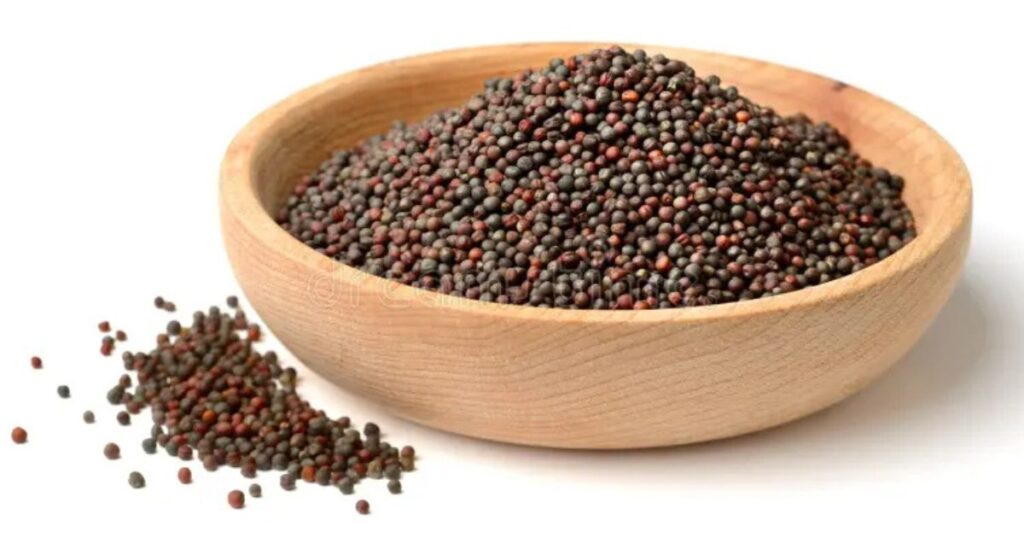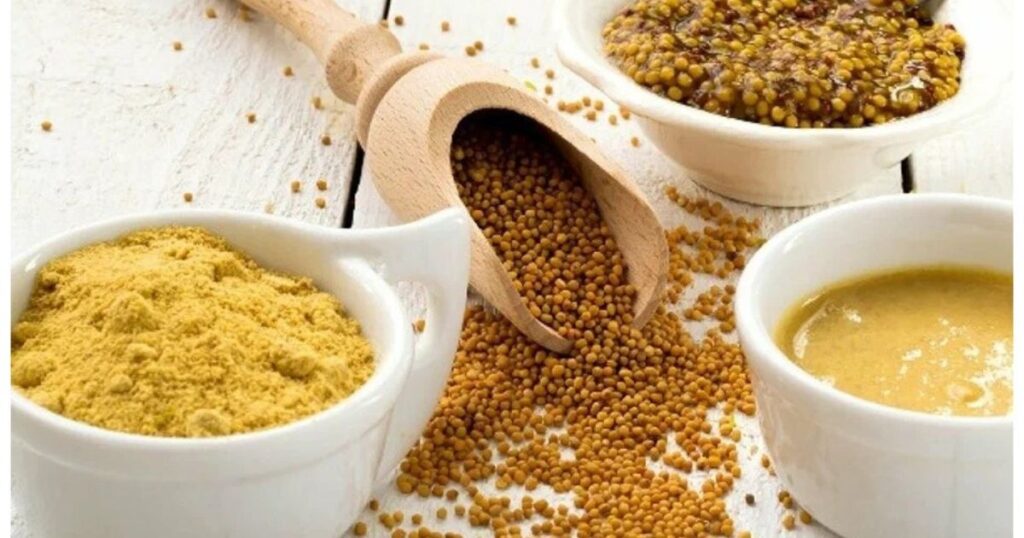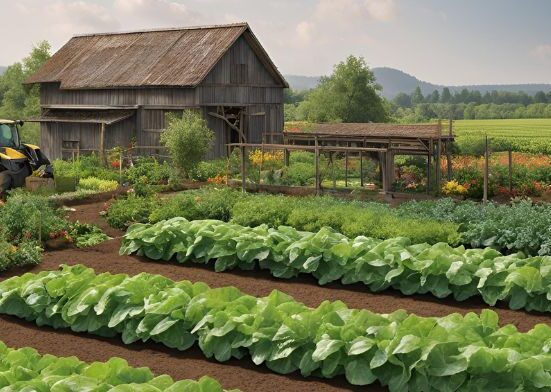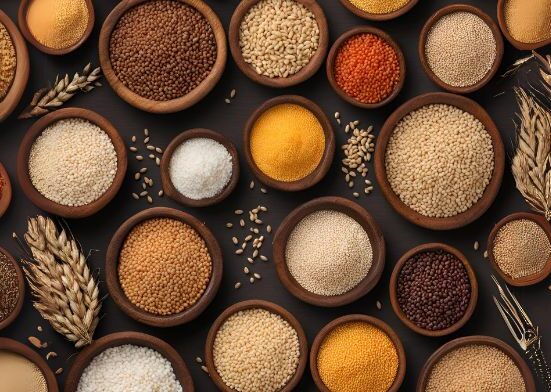Whole-grain mustard is a condiment that adds flavor, texture, and a touch of elegance to various dishes. Whether used in a gourmet recipe or as a simple dip, its unique qualities make it a kitchen staple for culinary enthusiasts worldwide. From its complex flavor profile to its versatility in cooking, whole-grain mustard is much more than just a sandwich topping. This blog post will explore the rich history, production process, culinary uses, health benefits, and tips for incorporating whole-grain mustard into your meals.
What Is Whole Grain Mustard?
Whole-grain mustard, also known as grainy or coarse mustard, is made from mustard seeds that are ground minimally, leaving the seeds mostly intact. This gives the mustard its characteristic texture, where the whole seeds are visible in the finished product. Unlike its smoother counterpart, yellow mustard, whole-grain mustard offers a delightful crunch that pairs well with its tangy, spicy, and slightly sweet is whole grain mustard gluten free flavor.
There are different varieties of whole-grain mustard, including those made from brown or black mustard seeds, and each has its distinct flavor. The seeds are mixed with vinegar, water, salt, and sometimes sugar and then aged to develop their full flavor. The result is a condiment that combines the sharp, pungent notes of mustard with a subtle sweetness and a pleasant texture from the whole seeds.
The History of Mustard
 Mustard seeds have been used as a spice and condiment for thousands of years. They were cultivated in ancient civilizations such as the Egyptians, Greeks, and Romans. The history of mustard dates back as early as 3,000 BC. Ancient Romans were known to have mixed ground mustard seeds with wine to create a condiment that closely resembled the mustards we know today. Mustard was brought to Europe in the Middle Ages, where it quickly gained popularity as a food accompaniment. The condiment became especially widespread in France, where Dijon mustard created in the town of Dijon in the 18th century—became synonymous with French cuisine. However, it wasn’t until the 19th century that whole-grain mustard, as we know it today, began to take maille whole-grain mustard shape.
Mustard seeds have been used as a spice and condiment for thousands of years. They were cultivated in ancient civilizations such as the Egyptians, Greeks, and Romans. The history of mustard dates back as early as 3,000 BC. Ancient Romans were known to have mixed ground mustard seeds with wine to create a condiment that closely resembled the mustards we know today. Mustard was brought to Europe in the Middle Ages, where it quickly gained popularity as a food accompaniment. The condiment became especially widespread in France, where Dijon mustard created in the town of Dijon in the 18th century—became synonymous with French cuisine. However, it wasn’t until the 19th century that whole-grain mustard, as we know it today, began to take maille whole-grain mustard shape.
The French and the Germans are often credited with popularizing whole-grain mustard, and both countries produce unique versions of the condiment. French whole-grain mustard is usually more mellow in flavor, while German mustard tends to have a sharper taste. Whole-grain mustard has grown steadily in the United States, with many gourmet food brands offering interpretations.
Production of Whole Grain Mustard
The production of whole-grain mustard starts with mustard seeds. These seeds are harvested from the mustard plant, a member of the cruciferous vegetable family, which also includes broccoli, cabbage, and kale. The seeds come in three primary colors: yellow (or white), brown, and black. Yellow mustard seeds are the mildest, while brown and black are more pungent and flavorful. After harvesting, the seeds are cleaned and lightly crushed or ground to expose the inner part of the seed while leaving the outer shell intact. This process helps to release the natural oils in the mustard seeds, which contain a compound called sinigrin. When combined with liquid, this compound gives mustard its characteristic heat and tang.
The mustard seeds are mixed with a liquid base, typically vinegar or wine, and sometimes water or beer. Salts, sugar, and additional flavorings, such as herbs or spices, are added to balance the mustard’s flavor. The mixture is then aged, allowing the flavours to meld together and the mustard to develop its full-bodied taste. The consistency of whole-grain mustard is achieved through careful grinding process control. The goal is to maintain enough of the mustard seed’s integrity to make the individual seeds visible and retain their crunchy texture. The final product is a thick, tangy, and slightly grainy mustard that can be used in various culinary is whole grain mustard good for you applications.
Culinary Uses of Whole Grain Mustard
As a Condiment for Sandwiches and Burgers
Whole-grain mustard is a fantastic alternative to traditional condiments like mayonnaise or ketchup. Its bold flavor pairs well with meats, cheese, and vegetables, adding complexity to sandwiches and burgers. Try spreading it on a baguette with roast beef, or use it as a topping for a grilled chicken sandwich. The slight crunch from the mustard seeds makes each bite even more best whole grain mustard enjoyable.
In Salad Dressings and Vinaigrettes
Whole-grain mustard is essential in many classic salad dressings, particularly vinaigrettes. It helps to emulsify the oil and vinegar, creating a smooth, stable dressing with a delightful tang. Whisk together olive oil, balsamic vinegar, whole-grain mustard, salt, and pepper for a simple mustard vinaigrette. This dressing can be used for various salads, from leafy greens to roasted vegetables.
As a Marinade for Meats and Fish
Whole-grain mustard makes an excellent marinade for meats and fish. Its acidity helps to tenderize the protein, while the mustard seeds infuse the meat with flavor. Try marinating chicken thighs in a mixture of whole-grain mustard, olive oil, garlic, and fresh herbs before is whole-grain mustard the same as Dijon grilling them. You can also marinate pork chops, lamb, or fish drip irrigation fillets.
In Sauces and Gravies
Whole-grain mustard adds depth to sauces and gravies, especially those accompanying roasted meats. For example, a mustard sauce made with whole-grain, cream, and white wine can be served alongside roasted chicken or pork. The mustard’s tanginess balances the sauce’s richness, creating a harmonious flavor profile.
As a Dip or Accompaniment
Whole-grain mustard works beautifully as a dip for appetizers and snacks. For a savory treat, serve it with pretzels, sausages, or cheese platters. The texture of the mustard complements the crispness of pretzels and the richness of cheese, making it a perfect match for a casual gathering or does whole grain mustard go bad picnic.
In Soups and Stews
Whole-grain mustard can also add a unique twist to soups and stews. A spoonful of mustard stirred into a hearty vegetable soup or a rich beef stew can brighten the dish and add a depth of flavour. It pairs particularly well with potato-based soups, where the tangy mustard cuts through the creaminess of trader joe’s whole grain mustard potatoes.
Health Benefits of Whole Grain Mustard
 Whole grain mustard is more than just a flavorful condiment—it also offers several health benefits. Packed with antioxidants, vitamins, and minerals, it supports overall well-being. The mustard seeds in whole-grain mustard contain selenium and magnesium, which may help reduce inflammation and support heart health. It also has antibacterial properties and can aid digestion by stimulating saliva and gastric juices. Additionally, the fiber content supports gut health, while its low-calorie nature makes it a great choice for weight management. Rich in omega-3 fatty acids, it may promote brain health. Adding whole-grain mustard to your diet can enhance both flavor and nutrition.
Whole grain mustard is more than just a flavorful condiment—it also offers several health benefits. Packed with antioxidants, vitamins, and minerals, it supports overall well-being. The mustard seeds in whole-grain mustard contain selenium and magnesium, which may help reduce inflammation and support heart health. It also has antibacterial properties and can aid digestion by stimulating saliva and gastric juices. Additionally, the fiber content supports gut health, while its low-calorie nature makes it a great choice for weight management. Rich in omega-3 fatty acids, it may promote brain health. Adding whole-grain mustard to your diet can enhance both flavor and nutrition.
Rich in Antioxidants
Rich in antioxidants, this powerful blend helps combat oxidative stress, promoting overall health and vitality. Antioxidants, such as vitamins C and E, polyphenols, and flavonoids, neutralize free radicals, reducing cell damage and supporting a strong immune system. Found in fruits, vegetables, nuts, and teas, these compounds contribute to glowing skin, enhanced brain function, and a lower risk of chronic diseases. By reducing inflammation and protecting against environmental stressors, antioxidants play a crucial role in slowing aging and boosting energy levels. Incorporating antioxidant-rich foods into your diet can help maintain heart health, improve digestion, and support long-term wellness.
Supports Digestive Health
Whole-grain mustard contains fiber, which is essential for digestive health. Fiber helps to regulate bowel movements, prevent constipation, and support a healthy gut microbiome. Additionally, mustard seeds contain a compound called glucosinolate, which has been shown to support detoxification processes in the liver.
Boosts Immune System
The mustard seeds used to make whole-grain mustard are also rich in essential vitamins and minerals, including vitamin C, which plays a crucial role in immune function. Vitamin C helps the body fight off infections and supports the production of collagen, which is vital for skin, cartilage, and cash crops bones.
Low in Calories
It is low in calories, making it a healthy condiment option for those looking to maintain or lose weight. Unlike creamy dressings and sauces that can be high in fat and calories, mustard adds bold flavour without the extra calories.
Flavor Profile of Whole Grain Mustard
One of the most distinctive features of whole-grain mustard is its flavor profile. The combination of mustard seeds, vinegar, and spices creates a tangy, sharp, mildly spicy taste that is less intense than pure ground mustard. The mustard seeds retain their natural oils, which add richness and depth to the flavor. As a result, whole-grain mustard offers a balanced bite that is tangy and spicy without overwhelming the palate.
The flavor can vary depending on the type of mustard seeds used. Yellow mustard seeds contribute a milder, slightly sweet taste, while brown and black seeds are more pungent and offer a more pronounced heat. Vinegar, wine, or other acidic liquids used in the preparation further contribute to the tanginess. At the same time, any added spices, such as turmeric, garlic, or herbs, can round out the flavor and add complexity.
Tips for Storing and Using Whole Grain Mustard
To get the most out of your whole-grain mustard, it’s essential to store it properly. Mustard should be kept in a cool, dry place, away from direct sunlight. After opening, it’s best to refrigerate whole-grain mustard to preserve flavor and prevent spoilage. The mustard can last several months in the fridge, but it’s best to use it within a few weeks for optimal freshness.
Don’t be afraid to experiment with different variations when using whole-grain mustard in recipes. Some brands offer mustard with added spices, herbs, or even honey, enhancing flavor and providing new culinary possibilities. If you’re feeling adventurous, make homemade mustard by adjusting the ingredients to suit your preferences.
How to Use Whole Grain Mustard

It is a versatile condiment with a bold, tangy flavor that can enhance various dishes. To use it, start by incorporating it into salad dressings or vinaigrettes. Whisk together whole-grain mustard, olive oil, vinegar, and a pinch of salt for a delicious, zesty base. It also pairs perfectly with grilled meats, sausages, or roasted vegetables, adding a punch of flavour. You can use it as a dip or spread for sandwiches, burgers, or wraps, adding texture and taste. Whole grain mustard can also be stirred into sauces or marinades to intensify meats’ flavor or even mashed potatoes for a unique twist. Experimenting with whole-grain mustard can elevate everyday meals with ease.
Whole Grain Mustard Recipes to Try
Whole-grain mustard adds a bold, tangy kick to a variety of dishes, making it a versatile ingredient in the kitchen. Try it in a homemade vinaigrette for salads, whisked with honey for a flavorful glaze on roasted meats, or mixed into mashed potatoes for a zesty twist. Spread it on sandwiches, stir it into creamy sauces, or use it as a marinade for grilled chicken and seafood. Whole-grain mustard also enhances cheese boards and pairs beautifully with charcuterie. Whether you’re cooking classic dishes or experimenting with new flavors, these it recipes will elevate your meals effortlessly.
The Future of Transpiration in Agriculture
Transpiration, the process by which plants release water vapor through their leaves, is crucial for crop health and climate regulation. In the future, advancements in agricultural technology will optimize transpiration to improve water efficiency and crop yields. Smart irrigation systems, genetically modified crops with enhanced drought resistance, and AI-driven climate monitoring will help farmers manage water loss effectively. Additionally, nanotechnology and soil moisture sensors will further enhance water retention and reduce waste. By integrating these innovations, agriculture will adapt to climate change, ensuring sustainable food production while conserving vital water resources for future generations.
Importance of Transpiration in Agriculture
 Transpiration plays a crucial role in agriculture by regulating plant temperature, maintaining nutrient flow, and supporting overall growth. This process, where water evaporates from plant leaves, creates a pull that helps absorb water and essential minerals from the soil. It enhances photosynthesis by maintaining leaf hydration and cooling the plant, preventing heat Saltwater Farming stress.
Transpiration plays a crucial role in agriculture by regulating plant temperature, maintaining nutrient flow, and supporting overall growth. This process, where water evaporates from plant leaves, creates a pull that helps absorb water and essential minerals from the soil. It enhances photosynthesis by maintaining leaf hydration and cooling the plant, preventing heat Saltwater Farming stress.
Conclusion:
Whole-grain mustard is more than just a condiment; it’s a versatile and flavorful ingredient that can elevate a wide range of dishes. Whether using it as a topping for your sandwich, a marinade for meats, or an ingredient in sauces and dressings,it adds complexity, texture, and a unique punch of flavor. With its long history, health benefits, and endless culinary possibilities, it’s no wonder that it has become a beloved staple in kitchens worldwide. So, next time you want to spice up your meals, reach for a jar of it and enjoy the bold, tangy goodness it brings to your plate.
FAQ:
What is Whole Grain Mustard?
It is where the seeds are only partially ground, leaving them whole or coarsely crushed. This gives the mustard a textured, grainy appearance and a milder, less sharp flavor than traditional mustard.
What Makes Whole Grain Mustard Different from Regular Mustard?
Unlike regular mustard, which is typically finely ground and smooth, it retains the mustard seeds. It offers a crunchy texture and a more complex flavor profile with a balance of tanginess and mild heat.
What Does It Taste Like?
Whole grain mustard has a tangy, zesty taste with a subtle heat from the mustard seeds. The entire seeds add a slightly sweet. Earthy crunch that contrasts nicely with the acidity of the vinegar or wine used in the mustard.
How Should Whole Grain Mustard be Used in Cooking?
It is a versatile condiment. It can be used as a topping for meats, in salad dressings, as a dip for pretzels, or incorporated into sauces.
Can Whole-Grain Mustard be Used in Salad Dressings?
Yes! It adds a delightful texture and flavor to vinaigrettes and salad dressings. It pairs well with olive oil, balsamic vinegar, and herbs, helping to emulsify the dressing while adding a tangy kick.







